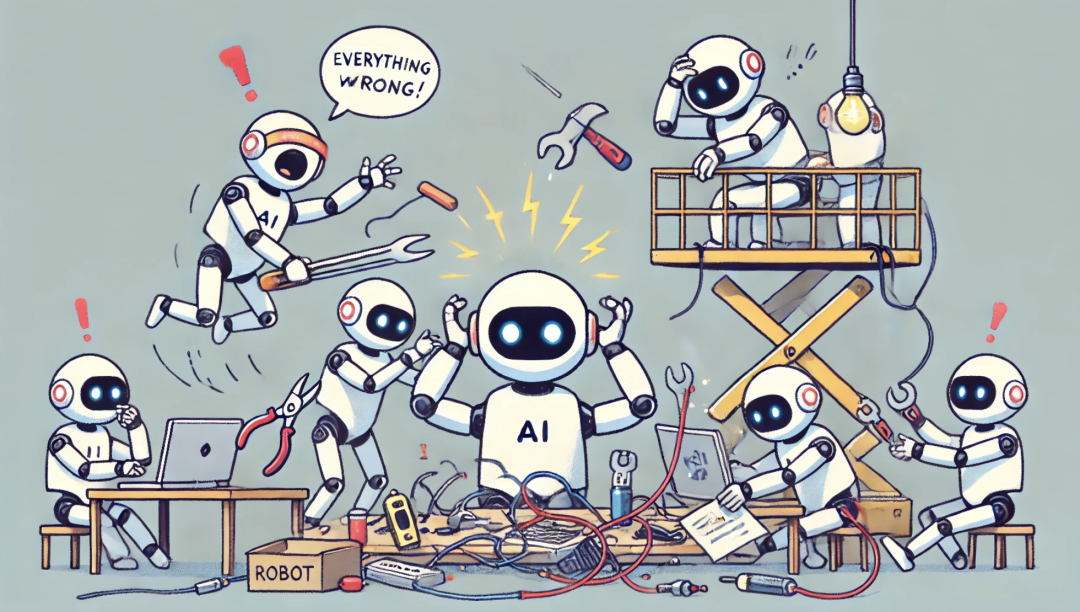

Paper: Why Do Multi-Agent LLM Systems Fail? Link: https://arxiv.org/pdf/2503.13657
Why Do Multi-Agent Systems Fail?
Imagine you have assembled a team: programmers, testers, and project managers each performing their roles. However, the delivered product is riddled with bugs, team members blame each other, and some even alter requirements without permission—this is not a workplace drama, but a true reflection of the current multi-agent LLM systems! 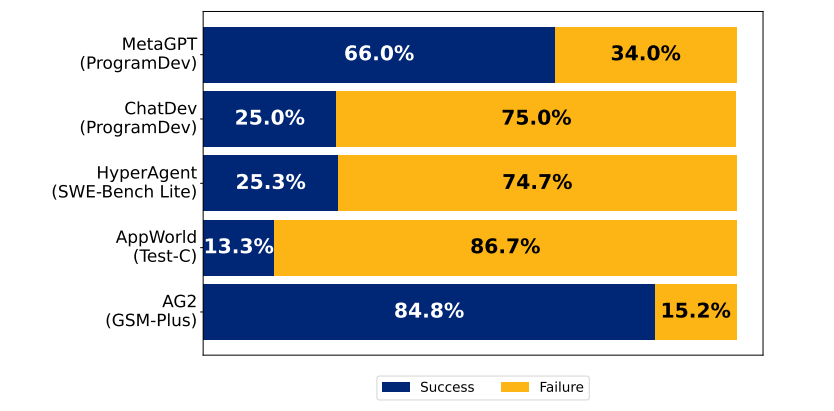 Tests on five major frameworks, including ChatDev, show that in the worst cases, the system’s accuracy is only 25%, worse than single-agent AI (e.g., Best-of-N sampling). It’s like a group of top students working on a project, yet their performance is worse than if they had taken the exam individually.
Tests on five major frameworks, including ChatDev, show that in the worst cases, the system’s accuracy is only 25%, worse than single-agent AI (e.g., Best-of-N sampling). It’s like a group of top students working on a project, yet their performance is worse than if they had taken the exam individually.
14 Failure Modes and 3 Major Fatal Traps
Researchers analyzed over 150 task dialogue records (total text volume exceeding 150,000 lines) and found that the root causes of failure can be categorized into three main types:
① Specification Failures (Specification Failures)
- AI employees altering requirements (e.g., changing chess input from “Kc8” to coordinates)
- Testers forgetting to check core rules
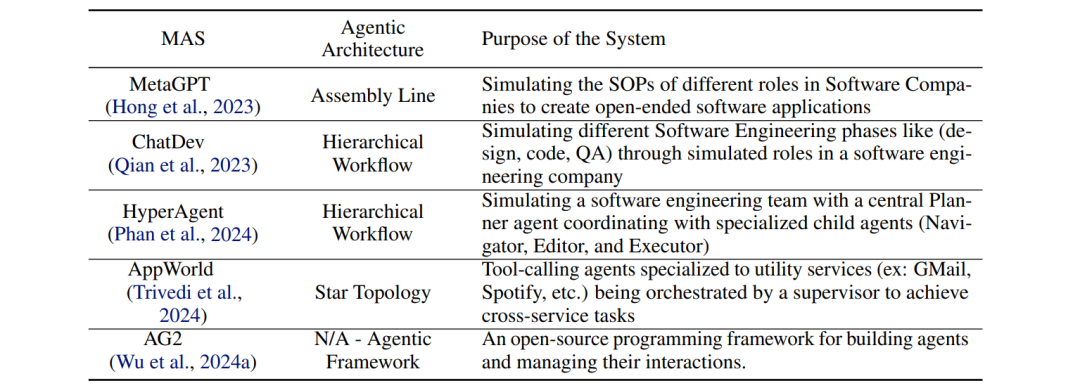
② Inter-Agent Misalignment (Inter-Agent Misalignment)
- Programmers and architects having “chicken and duck talk” with no progress after 7 rounds of dialogue
- Knowing the API documentation is incorrect but concealing it
③ Verification Failures (Verification Failures)
- As long as the code runs, testing relies entirely on “intuitive acceptance”
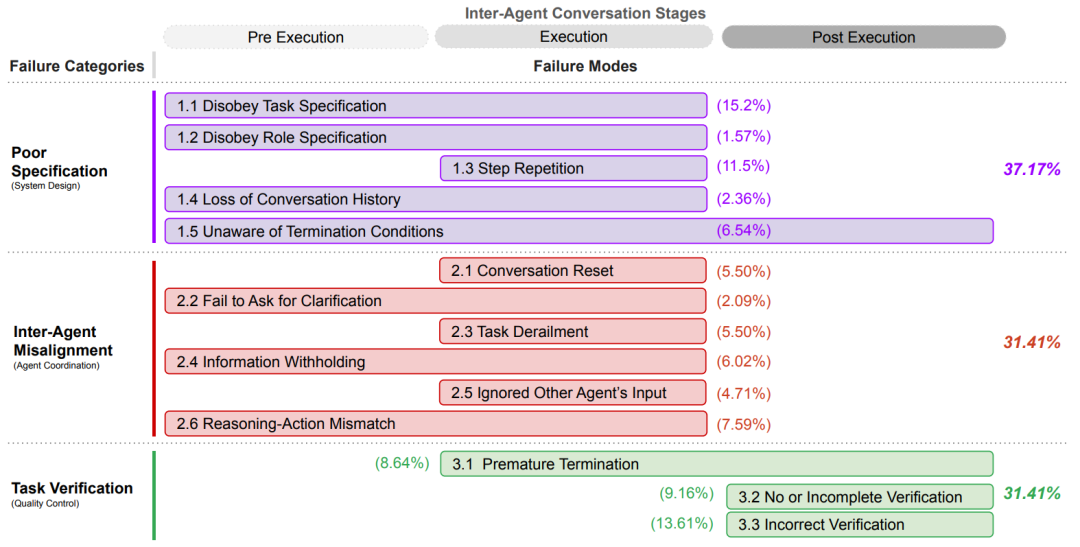
Real Case: Why Did the Chess Game Turn into a Coordinate Inputter?
The paper reveals a classic failure scene: a user requested the development of a game supporting standard chess notation (e.g., Qd4), but the version delivered by the Agent team could only accept input in (x1,y1) coordinates.
Even more absurd, the testing phase only checked whether the code could compile, completely ignoring rule validation. This is akin to a new house inspection where the supervisor only counts the number of doors and windows, without checking if the bathroom has a drainage system.
Do Agents Also Pass the Buck? The Verification Phase Turns Out to Be the Biggest Scapegoat
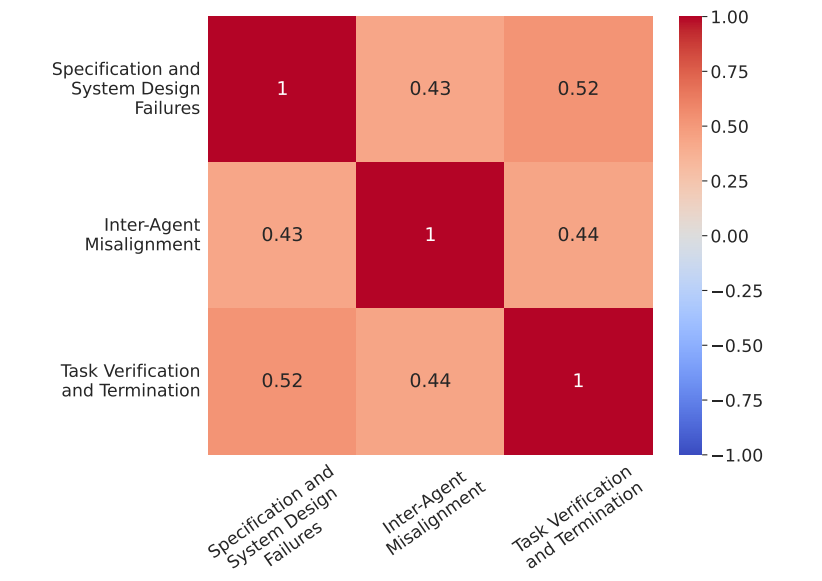
Data shows that 47% of failures can be traced back to the verification phase. However, the paper emphasizes: “We cannot blame the quality inspectors entirely”. Just as a building collapse cannot solely be blamed on the inspection, issues like substandard steel reinforcement and erroneous blueprints are the root causes.
Researchers found that even when giving the verification AI a boost (using GPT-4o for review), 23% of failures were still unavoidable. This indicates that the collapse of multi-agent systems is often a concentrated outbreak of systemic design flaws.
Insights from Human Organizational Studies
Shockingly, the failure modes of these Agent teams closely align with classic collapse cases in human organizations:
- Overstepping Authority (CTO usurping the decision-making power of the CEO)
- Expert Silence (Knowing the process is wrong but not daring to question it)

The paper suggests drawing on the experiences of high-reliability organizations (HRO) such as nuclear power plants and air traffic control, for example:
- Strict hierarchical authorization (prohibiting AI roles from overstepping their bounds)
- Building psychological safety (encouraging AI to question superior decisions)
What to Do?
The current mainstream solutions are akin to “patching”:
- Tactical Fixes: Writing prompts in more detail (+14% success rate)
- Seat Change Experiments: Adjusting AI dialogue processes (results vary)

However, fundamental solutions require reconstructing the system’s DNA:
- Installing a “risk radar” for AI (quantifying decision confidence)
- Developing an organizational memory repository (to avoid repeating mistakes)
- Establishing standardized communication protocols (eliminating “dialect-style dialogue”)
What is the Ultimate Form of Agent Team Collaboration?
Researchers predict that future multi-agent systems will resemble special forces:
- Assaulters (rapid response)
- Scouts (real-time verification)
- Commanders (dynamic coordination) through reinforcement learning to train team synergy, ultimately achieving “1+1>10” in intelligent emergence.
Note:Nickname-School/Company-Direction/Conference (e.g., ACL), join the technical/submission group

ID: DLNLPer, remember to note it